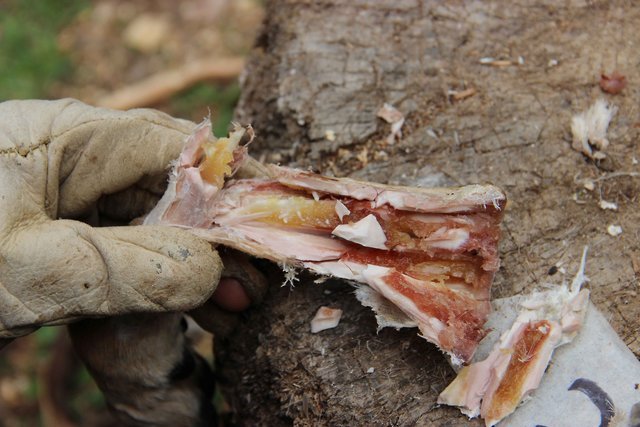Oct 10 2019
Ancient Food Storage
 There are many things we take for granted in modern life, skills that humanity developed over literally hundreds of thousands of years, but also many modern conveniences that are fairly recent. One is food storage – saving food for later consumption.
There are many things we take for granted in modern life, skills that humanity developed over literally hundreds of thousands of years, but also many modern conveniences that are fairly recent. One is food storage – saving food for later consumption.
We began as hunter-gatherers, a lifestyle that involves mostly consuming food right as it is acquired. This creates times of feast and famine, but little consistency or predictability. Without refrigeration and other techniques of food preservation, most foods would not last long. Cooked meat, gathered fruits might last a few days, while nuts and roots might last a bit longer. But that was about it.
Agriculture led to a significant increase in our control over our food supply. We could now store food as dried grains for months. As we cultivated crops, some were selected for storing well. Some hard-skinned squash, for example, can keep for several months. Cheese was a huge discovery, preserving milk calories also for months. Domesticated animals could be “preserved” indefinitely, and then slaughtered when needed. Salting, pickling, smoking, and curing were discovered over time as methods of preserving various foods. Industrialization eventually allowed for things like canning and, of course, refrigeration.
But what was the oldest and first example of humans preserving food for later consumption? Archaeologists think they have discovered it – researchers from Tel Aviv report the finding from Qesem Cave, a paleolithic human settlement from 400,000 years ago. They found evidence that the people living there would preserve deer and other bones for potentially up to 9 weeks, and then break them open to eat the marrow.
Bone marrow is a calorie-dense source of nutrition, and probably an important food for early humans and human ancestors (whether through scavenging or hunting). What the researchers found is that the people living in Qesem Cave were mostly hunting deer. They would strip the meat off the deer and leave most of the carcass where it was killed. However, they would bring back the limbs and skulls, still covered in skin. Why the limbs and skull? Those are the bones with the most marrow.
They probably left the skin on so that it would dry and help preserve the bones. These bones, in the cave, show a different pattern of marks on them from ones stripped of meat. Rather, they were skinned and then broken open to extract the marrow. The researchers also experimented with their own deer bones, and found that the marrow would last and be edible for up to 9 weeks. Obviously there is no way to know how long these paleolithic people actually stored the bones before eating them, but 9 weeks is the apparent upper limit.
That is significant – extending food storage from days to weeks. This could get them through the lean times, and might make the difference between living and starving in some cases.
“We show for the first time in our study that 420,000 to 200,000 years ago, prehistoric humans at Qesem Cave were sophisticated enough, intelligent enough and talented enough to know that it was possible to preserve particular bones of animals under specific conditions, and, when necessary, remove the skin, crack the bone and eat the bone marrow,” Professor Avi Gopher explains.
So that was cutting-edge food preservation technology for more than 200,000 thousand years.
Qesem cave is an interesting archaeological site, occupied over a very long period of time. The only human remains there are teeth, but the anatomical details suggest fully modern humans (although some Neanderthal contribution cannot be ruled out). There is also evidence there of regular use of fire, roasting meat, and recycling resources. The technology was advanced stone tools, mostly blades with some axes. They hunted mainly deer, pig, and horses but did not butcher them in the cave, and as noted only brought back selected bones.
This is another example that the main adaptation of humans is cleverness. The timeline also reinforces the fact that clever advances tend to build on themselves, accelerating over time. One good solid idea every few thousand years was apparently the pace of progress in the paleolithic. Think of how many orders of magnitude greater human advance is today.






